Upgrade & Secure Your Future with DevOps, SRE, DevSecOps, MLOps!
We spend hours scrolling social media and waste money on things we forget, but won’t spend 30 minutes a day earning certifications that can change our lives.
Master in DevOps, SRE, DevSecOps & MLOps by DevOps School!
Learn from Guru Rajesh Kumar and double your salary in just one year.
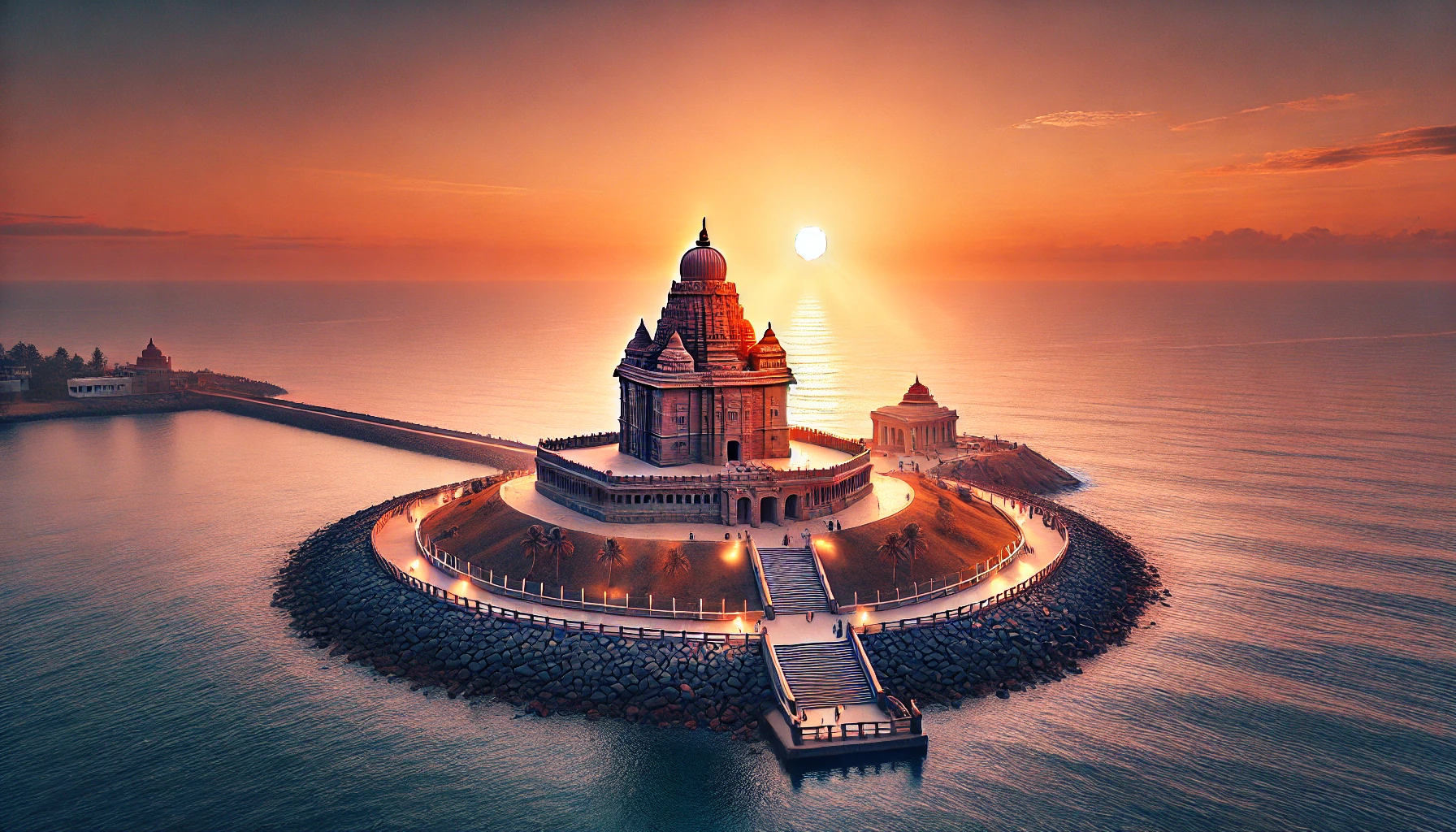
Introduction to Kanyakumari: A Confluence of Waters and Cultures
Kanyakumari, formerly known as Cape Comorin, stands out not only as the southernmost tip of the Indian Peninsula but also as a place where three great bodies of water—the Indian Ocean, the Arabian Sea, and the Bay of Bengal—converge. This unique geographical feature makes Kanyakumari a significant point of interest for both geography enthusiasts and spiritual seekers. The town is renowned for its breathtaking sunrises and sunsets, especially on full moon days when one can witness the sun setting and the moon rising simultaneously over the ocean.
Historically, Kanyakumari has been an important center for art, culture, and religion. It is steeped in rich mythology and folklore, most notably associated with the goddess Kanyakumari (the Virgin Goddess), an incarnation of Parvati who performed penance on the tip of India to secure Lord Shiva’s hand in marriage. The town is dotted with historic and religious sites that echo tales of a vibrant cultural past intertwined with Hindu mythology.
Culturally, Kanyakumari is a melting pot of various traditions due to its proximity to Kerala and Tamil Nadu, which influences its unique architectural styles, festivals, and culinary tastes. The town’s heritage is also reflected in its diverse population, consisting of Hindu, Christian, and Muslim communities, each adding to the cultural mosaic of this coastal town.
Getting There
Here’s a structured tabular format for reaching Kanyakumari through various transportation modes, along with recommended government websites for more detailed and updated travel information:
| Mode of Transport | Details | Recommended Govt. Website for More Information |
|---|---|---|
| By Air | Nearest Airport: Thiruvananthapuram International Airport (TRV) | Airports Authority of India |
| Distance to Kanyakumari: Approx. 90 km | ||
| Travel Options: Taxi, Bus | ||
| By Train | Major Station: Kanyakumari Railway Station (CAPE) | Indian Railways |
| Direct trains from: New Delhi, Mumbai, Kolkata | ||
| By Road | Connected by: National Highway 44 | National Highways Authority of India |
| Major nearby cities: Chennai, Madurai, Trivandrum, Kochi | ||
| Bus services: Tamil Nadu and Kerala State Transport | TNSTC, KSRTC |
Travel Tips
- Train Travel: For train schedules and bookings, visit the official Indian Railways website or use their mobile application, IRCTC.
- Air Travel: For flight schedules, bookings, and airport information, refer to the Airports Authority of India website.
- Road Travel: For information on national highways and road conditions, check the National Highways Authority of India website.
- Local Transport: For information on local bus services within Tamil Nadu and Kerala, refer to the respective state transport websites listed above.
Best Time to Visit
Here’s the information about the best time to visit Kanyakumari presented in a clear tabular format:
| Season | Months | Climate Description | Key Festivals | Recommendations |
|---|---|---|---|---|
| Winter | October to February | Mild and comfortable with temperatures ranging from 17°C to 33°C. | Navratri, Christmas | Ideal for sightseeing and attending cultural events. Best time to visit. |
| Summer | March to May | Hot with temperatures reaching up to 35°C. | Chithra Pournami Festival | Suitable for festival enthusiasts; plan activities in cooler parts of the day. |
| Monsoon | June to September | Rainy, with potential for heavy showers and lush landscapes. | Onam (influenced by nearby Kerala) | Good for those who enjoy rainy, scenic environments; less crowded. |
Historical and Cultural Attractions in Kanyakumari
Kanyakumari is not only the southernmost tip of India but also a treasure trove of cultural and historical landmarks. Here’s a detailed guide to some of the must-visit sites in the area:
1. Vivekananda Rock Memorial:
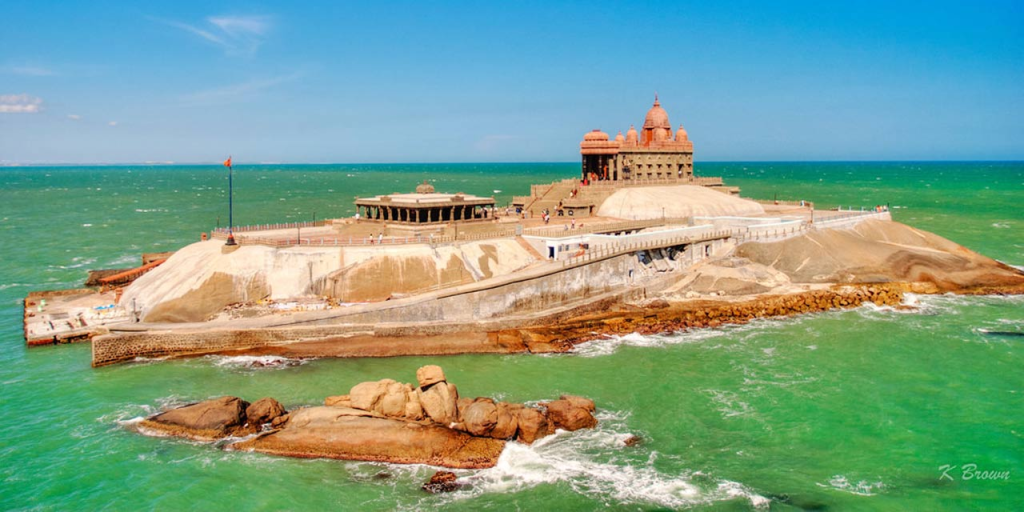
- Description: This iconic monument is situated on a small island off the coast of Kanyakumari, accessible by a ferry ride. It was built in 1970 in honor of Swami Vivekananda, who meditated here in 1892 before his famous trip to Chicago. The memorial consists of two main structures, the Vivekananda Mandapam and the Shripada Mandapam.
- Significance: The site is considered a sacred fusion of the spiritual and the natural, offering panoramic views of the ocean and a meditative ambiance that attracts visitors from all over the world.
2. Thiruvalluvar Statue:
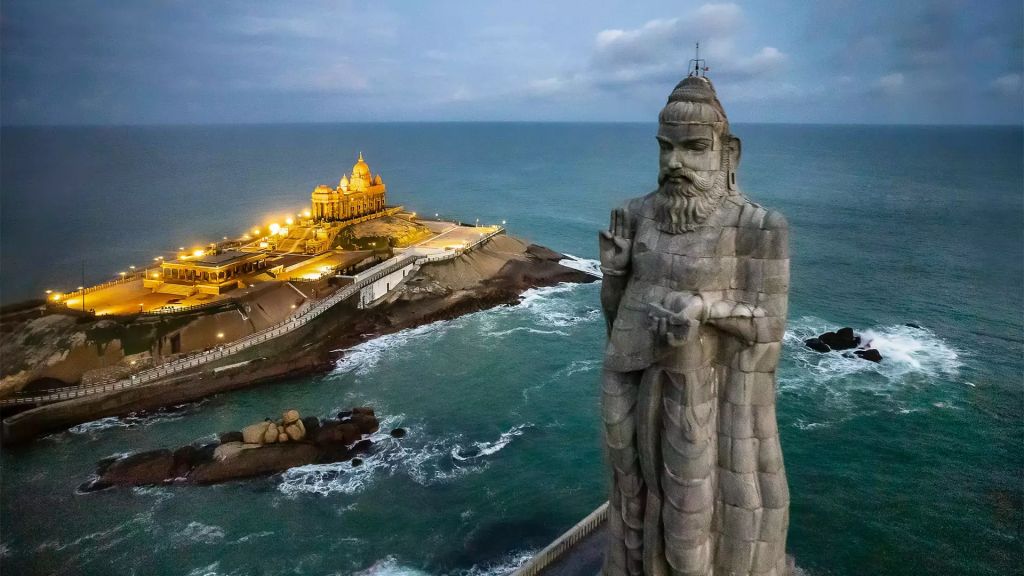
- Description: Adjacent to the Vivekananda Rock Memorial stands the majestic 133-feet tall statue of the Tamil poet and philosopher Thiruvalluvar, who authored the ‘Thirukkural’, an ancient text on ethics and morality. The statue’s height symbolizes the 133 chapters in the Thirukkural.
- Significance: This statue is a cultural symbol, representing the rich literary heritage of Tamil Nadu and offering insight into Tamil culture and philosophy.
3. Bhagavathy Amman Temple:
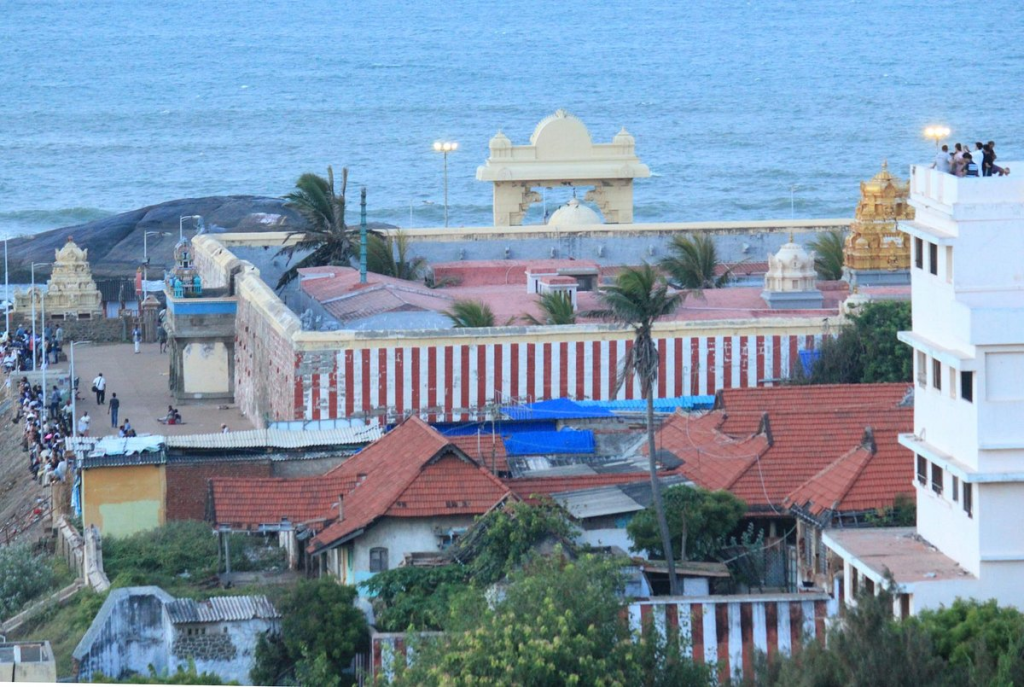
- Description: One of the oldest temples in Kanyakumari, this shrine is dedicated to Devi Kanyakumari, an incarnation of Goddess Parvati. The temple features intricate carvings and art that depict the story of the Goddess.
- Significance: It is a significant religious site, especially during the Chaitra Purnima festival, when devotees from across the country visit to witness the divine alignment of the sun and moon.
Lesser-Known Historical and Cultural Sites:
4. Tsunami Monument:
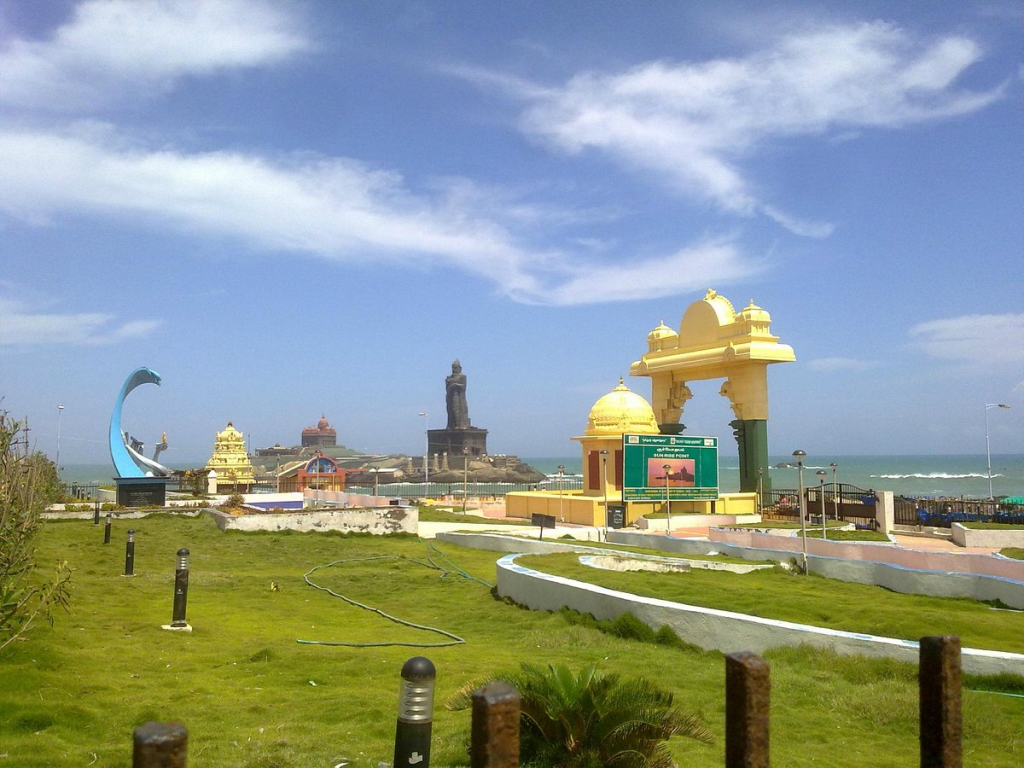
- Description: Built to commemorate the lives lost in the 2004 Indian Ocean earthquake and tsunami, this monument is located near the southern shore. It features art that captures the event’s impact and resilience of the survivors.
- Significance: The monument serves as a poignant reminder of the tragedy and the strength of the human spirit in the face of natural disasters.
5. Vattakottai Fort:
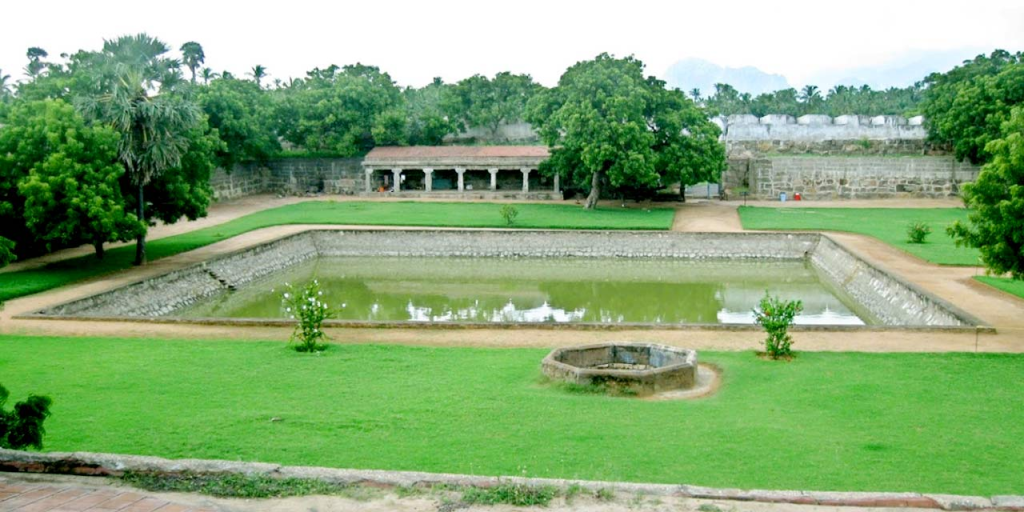
- Description: A seaside fort at the northern end of Kanyakumari, built in the 18th century during the reign of the Travancore Kingdom. The fort offers a panoramic view of the sea on one side and the Western Ghats on the other.
- Significance: It represents the architectural and military ingenuity of the past and is a popular spot for picnics and historical exploration.
6. Gandhi Memorial Mandapam:
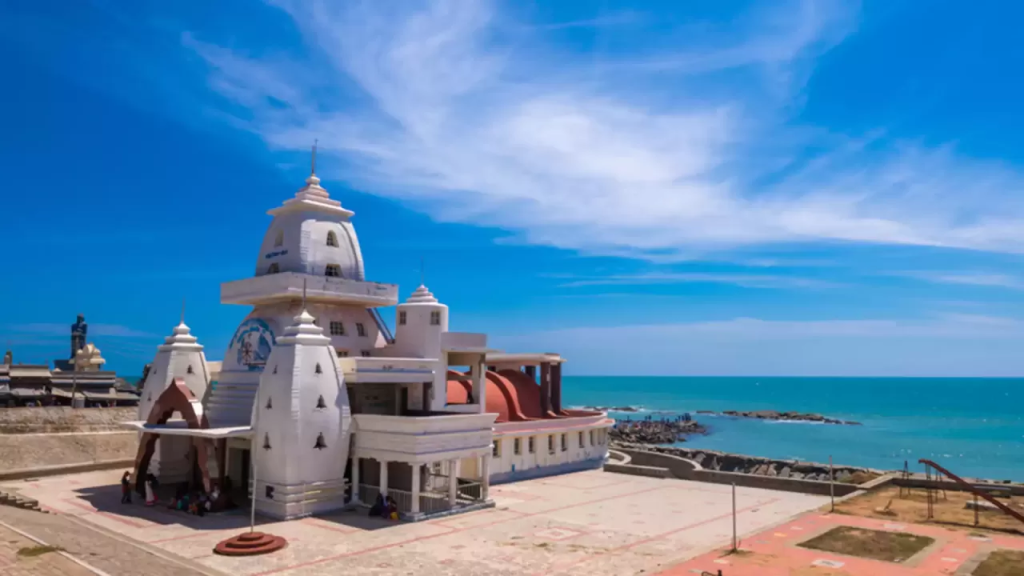
- Description: Constructed at the spot where Mahatma Gandhi’s ashes were kept before immersion, the architecture of the building is designed such that on Gandhi’s birthday (October 2nd), the first rays of the sun fall on the exact place where his ashes were placed.
- Significance: This site is a tribute to Gandhi’s legacy and his deep connection with Kanyakumari.
Natural Attractions in Kanyakumari
Kanyakumari is not only a cultural hub but also a place of stunning natural beauty. Here are some of the key natural attractions along with tips for making the most of these scenic locations:
1. Kanyakumari Beach:

- Description: Unlike typical sandy beaches, Kanyakumari Beach is known for its multicolored sand and rocky shoreline, offering a unique beach experience. The beach provides a perfect view of the sunrise and sunset over the ocean.
- Tips: Visit early in the morning for a tranquil sunrise or at dusk for a spectacular view of the sunset. Due to the rocky terrain, swimming might be restricted, so it’s best enjoyed for walks and the scenic view.
2. Triveni Sangam:

- Description: A significant geographical and spiritual point where the three seas (Bay of Bengal, Arabian Sea, and Indian Ocean) meet. This place holds immense sacred value and is believed to be a powerful spot for purification.
- Tips: Visit during early morning or late afternoon for less crowd and a serene experience. It’s an ideal spot for photography, especially during the twilight hours when the waters reflect the colors of the sky.
3. Sunset Point:
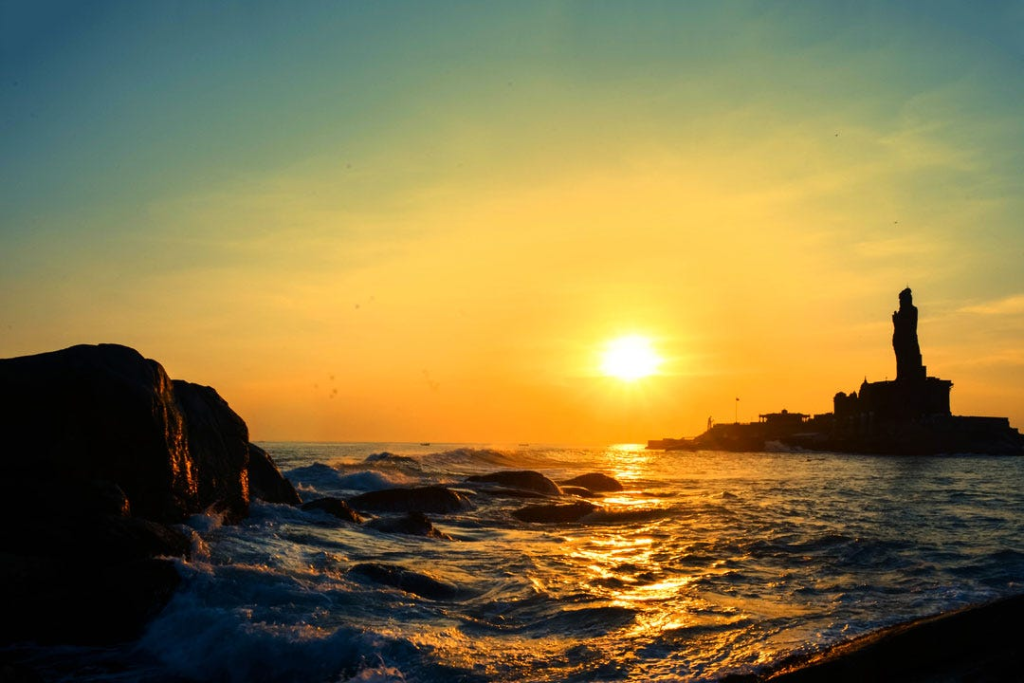
- Description: Located on the western end of the main beach, this spot offers an unobstructed view of the horizon. It is one of the few places in India where you can observe the sun setting over the ocean.
- Tips: Arrive at least 30 minutes before sunset to secure a good viewing spot as it can get crowded. Keep your cameras ready for some breathtaking shots of the sun dipping below the sea.
4. Thirparappu Falls:
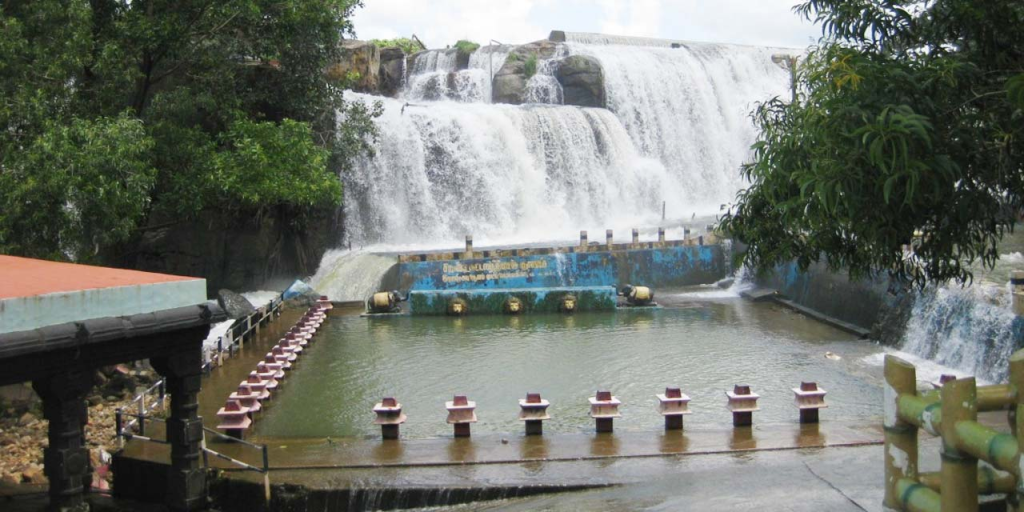
- Description: Located around 55 kilometers from Kanyakumari, these falls are part of the Kodhaiyar River and offer a spectacular sight with lush greenery around.
- Tips: Best visited after the monsoon season (October to February) when the falls are in full flow. There are boating options available and a small Shiva temple nearby that can be visited.
6. Maruthuva Malai:

- Description: Also known as the ‘Medicine Mountain’, this small hillock near Kanyakumari is covered with medicinal plants and offers panoramic views of the surrounding landscape.
- Tips: Ideal for a short trek, early mornings or late afternoons are perfect to avoid the midday heat. The mountain is also a great spot for bird watching and enjoying the tranquility of nature.
7. Baywatch Amusement Park:
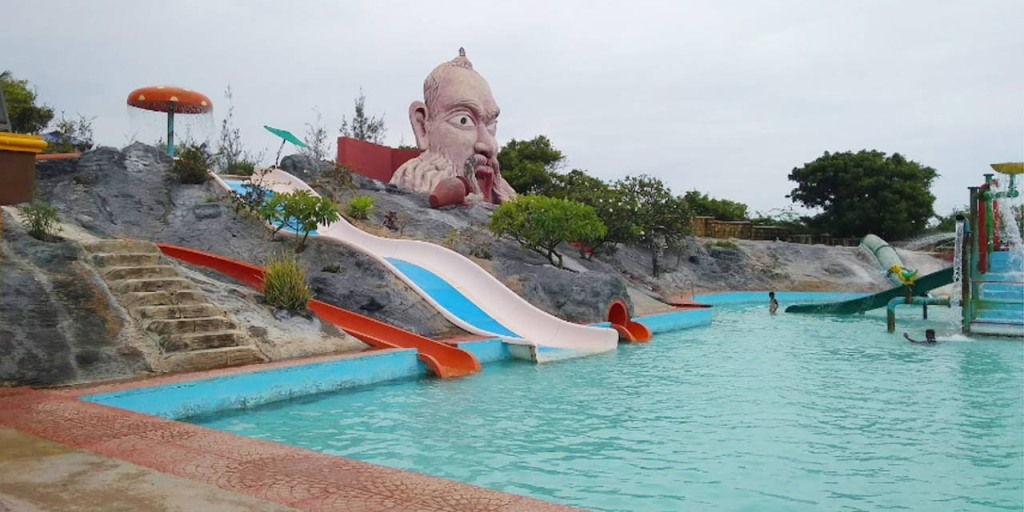
- Description: While not a natural site, this water-themed amusement park offers a range of fun activities and is located near the beach.
- Tips: Visit during the midday when you want a break from the harsh sun and indulge in some fun water rides and games.
Activities and Experiences in Kanyakumari
Kanyakumari offers a range of activities and experiences that cater to different interests, from serene nature explorations to engaging cultural experiences. Here’s a list of activities that tourists should consider when visiting this vibrant locale:
1. Ferry Rides to Vivekananda Rock Memorial:
- Description: Take a short boat ride from the mainland to the famous Vivekananda Rock Memorial. The ferry journey offers stunning views of the surrounding sea and coastline.
- Experience: Enjoy the brisk sea breeze and watch the changing colors of the water as you approach the rock. The ride itself, along with the panoramic views from the memorial, makes this a must-do activity.
2. Shopping for Local Handicrafts:
- Description: Kanyakumari is known for its colorful handicrafts, including shell crafts, palm leaf utility items, and traditional Tamil fabrics.
- Experience: Visit the local markets and shops around the temple area to find unique handmade items. It’s a great way to support local artisans and bring home a piece of Kanyakumari’s cultural heritage.
3. Attending Cultural Performances:
- Description: Kanyakumari hosts various cultural performances showcasing traditional dance, music, and drama, especially during festivals.
- Experience: Check the local cultural centers or festival schedules to catch performances of traditional arts like Kathakali or Bharatanatyam. These shows are vibrant displays of local customs and artistry.
4. Watching Sunrise and Sunset:
- Description: The geographical location of Kanyakumari allows for unique sightings of both sunrise and sunset over the ocean.
- Experience: Plan to visit the sunrise and sunset points early enough to secure a good spot. Witnessing these natural phenomena is truly mesmerizing and offers excellent opportunities for photography.
5. Explore the Thiruvalluvar Statue:
- Description: Besides the Vivekananda Rock, the giant statue of the Tamil poet Thiruvalluvar on a nearby island is another highlight.
- Experience: After visiting the Vivekananda Rock Memorial, take the opportunity to admire the imposing sculpture up close and learn about the poet’s contributions to Tamil literature.
6. Visit Tsunami Monument:
- Description: This monument commemorates the victims of the 2004 tsunami.
- Experience: Reflect on the resilience of the human spirit and the force of nature at this poignant site. It’s a place for quiet contemplation and understanding the impact of natural disasters.
7. Participate in Temple Festivities:
- Description: The Bhagavathy Amman Temple and other temples in Kanyakumari celebrate various Hindu festivals with much pomp and show.
- Experience: Participating in or witnessing these festivities can offer insights into Hindu rituals and the spiritual life of the locals. Check for festival dates and events to align your visit.
8. Culinary Adventures:
- Description: Taste the local cuisine which is a blend of Tamil Nadu and Kerala styles, featuring seafood, coconut, and spices.
- Experience: Try local dishes such as banana chips, seafood curries, and coconut-based sweets from street vendors and traditional eateries.
9. Nature Walks and Bird Watching:
- Description: The areas around Kanyakumari, especially near the Maruthuva Malai and coastal regions, are ideal for nature walks and bird watching.
- Experience: Take guided tours or solo hikes to explore the rich biodiversity of the region. Early mornings are best for spotting a variety of local and migratory birds.
Local Cuisine
Here’s a table that highlights the local dishes in Kanyakumari, along with the best places to sample traditional Tamil cuisine, ranging from street food to fine dining options:
| Type of Cuisine | Local Dishes | Where to Eat | Description/Experience |
|---|---|---|---|
| Street Food | Banana Chips, Murukku, Jaggery sweets | Near Kumari Amman Temple Street | These snacks are perfect for on-the-go munching while exploring. Affordable and authentically made. |
| Seafood Snacks | Coastal Areas near the beach | Fresh catch cooked in local spices, served hot and crisp. | |
| Traditional Eats | Kothu Parotta, Avial, Sambar, Rasam | Hotel Saravana, Annapoorna | Experience hearty meals that are staple to Tamil cuisine with rich flavors and varied textures. |
| Meen Kuzhambu (Fish Curry) | Hotel Sangam | A spicy and tangy fish curry served with rice or appam, showcasing local spices and cooking styles. | |
| Fine Dining | Continental and South Indian cuisine | The Seashore Hotel | Offers a blend of local and international dishes in a more upscale setting. |
| Authentic Tamil Thali | Sparsa Resort | A luxurious dining experience featuring a full array of Tamil Nadu’s finest dishes in one meal. |
Accommodation
Here’s a structured table detailing accommodation options in Kanyakumari, catering to various budgets, from luxury hotels to budget-friendly guesthouses. The table includes recommendations based on location, value for money, and services offered:
| Budget Type | Hotel/Guesthouse Name | Location | Price Range | Features |
|---|---|---|---|---|
| Luxury | The Seashore Hotel | Near Kanyakumari Beach | Above INR 4000 | Ocean views, spa services, in-house restaurant, close to attractions, luxury amenities. |
| Sparsa Resort | Near Sunset Point | Above INR 3500 | Eco-friendly, fitness center, pool, restaurant with local cuisine, scenic views. | |
| Mid-range | Hotel Sea View | West Car Street | INR 2500 – 3500 | Direct sea views, proximity to Vivekananda Rock Memorial, family-friendly, restaurant on site. |
| Singaar International Hotel | Near Kanyakumari Beach | INR 2000 – 3000 | Spacious rooms, swimming pool, travel desk, conference facilities, close to shopping areas. | |
| Budget | Hotel Sun World | Near Vivekananda Kendra | INR 1000 – 2000 | Basic amenities, comfortable lodging, good for short stays, nearby major tourist spots. |
| Bharani Hotel | Main Road | Below INR 1000 | Affordable, centrally located, easy access to public transport and local attractions, dining options nearby. | |
| Guesthouses | New Cape Hotel | Near Gandhi Memorial | INR 800 – 1500 | Simple rooms, friendly atmosphere, ideal for backpackers and solo travelers, close to cultural sites. |
Shopping and Souvenirs
Here’s a detailed guide to shopping and souvenirs in Kanyakumari, presented in a tabular format that highlights local markets, special products, and tips on what to bring back home:
| Shopping Location | Special Products | Description | Souvenir Tips |
|---|---|---|---|
| Beach Road Shops | Shell Crafts, Palm Leaf Paintings | Along Beach Road, you’ll find numerous shops selling local crafts. | Shell items are unique; choose intricate designs for decorative pieces. |
| Kanyakumari Market | Handwoven Saris, Spices | This market offers a variety of local textiles and flavorful spices. | Buy handwoven saris for a traditional gift; spices are great for culinary enthusiasts. |
| Sannathi Street Market | Wooden Toys, Decorative Items | Located near the temple, known for wooden and bronze crafts. | Pick up wooden or bronze statues of deities as culturally rich gifts. |
| Kumari Mall | Local Fashion, Modern Souvenirs | A more modern shopping experience with a mix of traditional and contemporary items. | Look for fashionable accessories that blend traditional motifs with modern styles. |
| Local Artisan Stalls | Coconut Shell Products, Handmade Jewelry | Often set up near major tourist spots, these stalls offer eco-friendly products. | Coconut shell crafts are both sustainable and unique, perfect for eco-conscious friends. |
| Fishnet Lane | Fresh Pearls, Seashell Jewelry | Famous for its pearl shops and seashell crafts. | Pearls make for elegant souvenirs and are locally sourced. |
Additional Tips for Shopping in Kanyakumari:
- Bargaining: In local markets and street stalls, don’t hesitate to bargain. It’s a part of the shopping culture and can often lead to better prices.
- Quality Checks: For crafts, especially shell and wooden items, check for quality and authenticity. Ensure shells are sustainably sourced to avoid harming local ecosystems.
- Early Shopping: Visit markets early in the day for the best selection and to avoid crowds, especially during peak tourist seasons.
- Support Local Artisans: Whenever possible, purchase directly from artisans to ensure they receive fair compensation for their work.
Cultural and Festival Calendar
Here’s a detailed guide to the cultural and festival calendar in Kanyakumari, including when these events occur and how tourists can experience or participate in them:
| Festival | Month/Occasion | Description | Tourist Participation |
|---|---|---|---|
| Navratri | September/October | A nine-day Hindu festival celebrating the goddess Durga with rituals, dance, and music. | Attend temple ceremonies, watch traditional dance performances. |
| Deepavali/Diwali | October/November | Festival of Lights celebrated across India with fireworks, lamps, and feasting. | Participate in local events, enjoy the festive decorations and foods. |
| Christmas | December 25 | Celebrated widely due to the significant Christian population, with special church services. | Join in the midnight mass, enjoy the festive atmosphere and carols. |
| Pongal | Mid-January | A harvest festival thanking the Sun God, marked by feasts and traditional games. | Witness or participate in the cooking of Pongal (rice dish), enjoy cultural performances. |
| Maha Shivaratri | February/March | Dedicated to Lord Shiva, observed with night-long prayers and ritual dances at temples. | Visit temples to observe rituals, particularly the night ceremonies. |
| Kanyakumari Festival | Last week of December | A cultural festival showcasing local arts, crafts, and culinary delights. | Explore handicraft stalls, attend musical and dance performances. |
| Cape Festival | October | Held at the Kanyakumari Cape, celebrating its rich heritage and cultural diversity. | Engage in the festivities, which include folk dances and local music. |
| Vivekananda Rock Memorial Anniversary | January 12 | Commemorates the anniversary of Swami Vivekananda’s enlightenment at the rock. | Participate in special lectures, spiritual activities on the site. |
| Chaitra Purnima | April/May | Significant in Kanyakumari for religious gatherings at the Bhagavathy Amman Temple. | Observe special rituals and processions, ideal for cultural immersion. |
| Onam | August/September | Though predominantly a Kerala festival, it’s celebrated with great enthusiasm in Kanyakumari. | Enjoy the Onam feast (Sadhya), watch traditional boat races and dances. |
How Tourists Can Experience These Festivals:
- Plan Ahead: If visiting specifically for a festival, book accommodations early as these times can attract a lot of tourists.
- Local Guides: Consider hiring a local guide who can provide insights into the significance of the festivities and help in participating correctly.
- Dress Appropriately: For temple visits and religious festivals, ensure to dress respectfully to adhere to local customs.
- Cultural Sensitivity: Always approach festivals with respect for local customs and traditions. Participate actively but respectfully.
Practical Tips
Here’s a comprehensive guide offering practical tips for travelers visiting Kanyakumari, covering safety, cultural etiquette, language basics, and other essential advice:
| Category | Tips and Information |
|---|---|
| Safety Tips | – Always keep personal belongings secure, especially in crowded places. |
| – Use licensed taxis and registered tour guides for excursions. | |
| – Be cautious when swimming; some beaches have strong currents. | |
| Cultural Etiquette | – Dress modestly when visiting religious sites; shoulders and knees should be covered. |
| – Remove shoes before entering temples. | |
| – It’s polite to greet with a nod or a simple ‘Namaste’ (hands pressed together at the chest). | |
| Language Basics | – Hello: Namaste or Vanakkam |
| – Thank You: Nandri | |
| – Yes: Aam, No: Illai | |
| – Please: Dayavu seithu | |
| Learning a few basic phrases in Tamil, the local language, can enhance your interaction. | |
| Local Transportation | – Buses and autorickshaws are the most common forms of local transport. |
| – Negotiate fares with autorickshaws before the ride. | |
| – For longer distances, consider renting a car or hiring a taxi. | |
| Currency Exchange | – Currency can be exchanged at banks, major hotels, or authorized currency exchange points. |
| – ATMs are widely available and are a reliable source of cash. | |
| Emergency Contacts | – Police: 100 |
| – Fire Service: 101 | |
| – Medical Emergency: 108 | |
| – Keep the contact number of your country’s consulate or embassy handy. |
Additional Tips:
- Health Precautions: Carry sunscreen, hats, and sufficient water to stay hydrated, especially when touring outdoor sites.
- Power Outages: Power fluctuations can be common; carrying a power bank for your mobile devices is advisable.
- Climate Preparedness: Depending on the season, pack appropriate clothing. Light cotton for summers and a light jacket for winters due to the coastal breeze.
Itineraries
Here’s a structured presentation of suggested itineraries for different lengths of stay in Kanyakumari, tailored for various types of travelers, in a tabular format:
| Duration | Ideal For | Activities and Attractions | Additional Notes |
|---|---|---|---|
| Day Trip | Solo, Couples | – Sunrise at Kanyakumari Beach – Visit Vivekananda Rock Memorial and Thiruvalluvar Statue – Explore Bhagavathy Amman Temple – Sunset at Sunset Point – Shopping on Sannathi Street | Start early to catch the sunrise. Ideal for those who enjoy packed schedules. |
| Weekend Trip | Families | Day 1: – Visit Vivekananda Rock and Thiruvalluvar Statue – Gandhi Memorial – Leisure at the beach Day 2: – Bhagavathy Amman Temple – Trip to Vattakottai Fort – Shopping and dinner | Ensure activities are kid-friendly. Incorporate rest periods for a relaxed pace. |
| Extended Stay (4-5 days) | Couples, Small Groups | Day 1: Local cuisine and beach relaxation Day 2: Cultural sites and Our Lady of Ransom Church Day 3: Day trip to Padmanabhapuram Palace Day 4: Temple tours and local markets Day 5: Departure or local sightseeing | Mix cultural immersion with leisure activities. Ideal for deep exploration. |
Photography Tips
Kanyakumari offers photographers a rich tapestry of subjects, from majestic landscapes and cultural landmarks to vibrant sunrises and sunsets. Here are the best spots for photography in Kanyakumari, along with some useful tips for capturing the area’s scenic beauty:
1. Vivekananda Rock Memorial:
- Best Time: Sunrise or sunset for soft lighting and dramatic skies.
- Tip: Use a wide-angle lens to capture the expansive views of the ocean and the memorial. Consider silhouette shots during sunset for added drama.
2. Thiruvalluvar Statue:
- Best Time: Mid-morning to avoid harsh midday light.
- Tip: Include the surrounding seascape to emphasize the statue’s impressive stature against the backdrop of the meeting seas.
3. Kanyakumari Beach:
- Best Time: Sunrise for the calmest seas and softest light, and sunset for vibrant sky colors.
- Tip: Experiment with different filters to enhance the sky and water; try long exposures for a smooth water effect.
4. Sunset Point:
- Best Time: Arrive early before sunset to choose the best spot.
- Tip: Use a tripod to stabilize your camera for sharp, clear images. The sun setting over the water provides excellent opportunities for color-rich landscape photos.
5. Bhagavathy Amman Temple:
- Best Time: Early morning to capture the temple in gentle light.
- Tip: Focus on capturing architectural details and intricate carvings. Maintain a respectful distance if photographing during religious activities.
6. Vattakottai Fort:
- Best Time: Early morning or late afternoon for softer light and fewer crowds.
- Tip: The fort’s elevation provides a unique vantage point for sea and landscape photos. Use the fort’s architecture as a frame for the sea in the background.
7. Tsunami Monument:
- Best Time: Late afternoon to use the setting sun as a backdrop.
- Tip: The monument can be a poignant foreground with the sunset colors enhancing the emotional impact of the scene.
8. Maruthuva Malai:
- Best Time: During the golden hour for the most flattering natural light.
- Tip: A polarizing filter can help enhance the lush greenery and the depth of the sky.
General Photography Advice:
- Golden Hour: Utilize the golden hour for the best natural lighting.
- Long Exposures: For water scenes, use a tripod and long exposures to capture movement in the water or clouds.
- Weather Preparedness: Kanyakumari’s weather can change quickly; be ready to protect your gear.
- Cultural Sensitivity: Always be respectful when photographing people or religious sites. Ask for permission where necessary.
Maps and Resources
When visiting Kanyakumari, having access to detailed maps and reliable resources can significantly enhance your travel experience by making navigation easier and more informative. Here’s a guide to help you find the best maps and resources for your trip:
Maps
- Google Maps:
- Usage: Ideal for real-time navigation, finding restaurants, accommodations, and attractions.
- Features: Offers street views, route planning for driving, walking, and public transport, and user reviews of places.
- Google Maps Website
2. OpenStreetMap:
- Usage: A collaborative project that provides freely editable maps.
- Features: Often includes details not found on other maps, such as smaller paths and locally known spots.
- OpenStreetMap Website
3. Tourist Maps:
- Availability: Available at local tourist information centers in Kanyakumari.
- Features: These maps are specifically designed for tourists and highlight major attractions, local dining options, and accommodations.
Resources
- Official Tourism Websites:
- Tamil Nadu Tourism: Provides comprehensive information about places to visit, events, and tourist services in Kanyakumari and across Tamil Nadu.
- Tamil Nadu Tourism Official Website
2. TripAdvisor:
- Usage: For reviews and recommendations on hotels, restaurants, and attractions.
- Features: User-generated content gives insights into the experiences of other travelers.
- TripAdvisor Kanyakumari Page
3. Lonely Planet:
- Usage: Offers travel guides, advice, and forums.
- Features: Known for its travel books, the website provides valuable insights and tips for traveling in Kanyakumari.
- Lonely Planet India Guide
4. Travel Apps:
- MakeMyTrip or Cleartrip: Useful for booking flights, trains, and hotels in India.
- Zomato: For finding the best dining options in Kanyakumari based on user reviews and ratings.
Additional Tips
- Always update your digital maps before traveling to ensure you have the latest information.
- Download offline maps or travel apps that can be accessed without internet connectivity, especially useful when traveling in areas with poor mobile reception.
- Check the local tourism board’s website for any downloadable brochures or guides.
By utilizing these maps and resources, you can ensure a well-informed and enjoyable visit to Kanyakumari, with easy access to all necessary travel information.